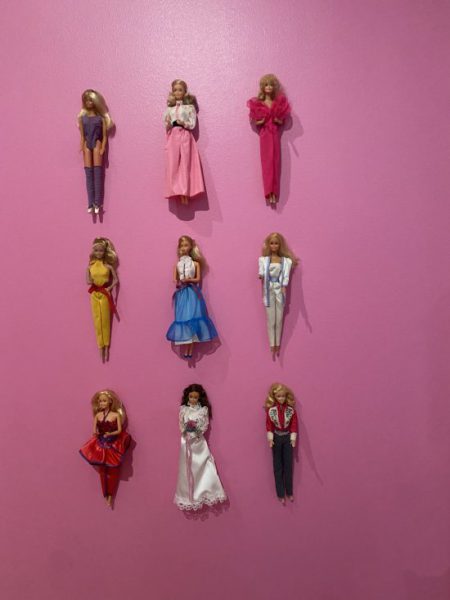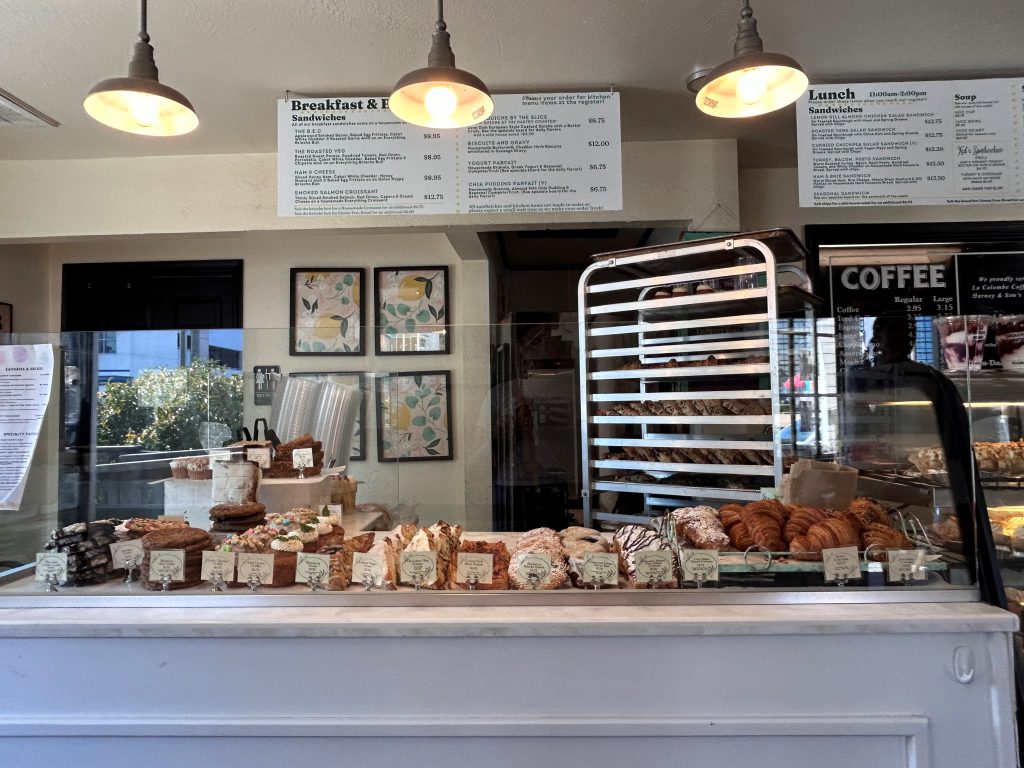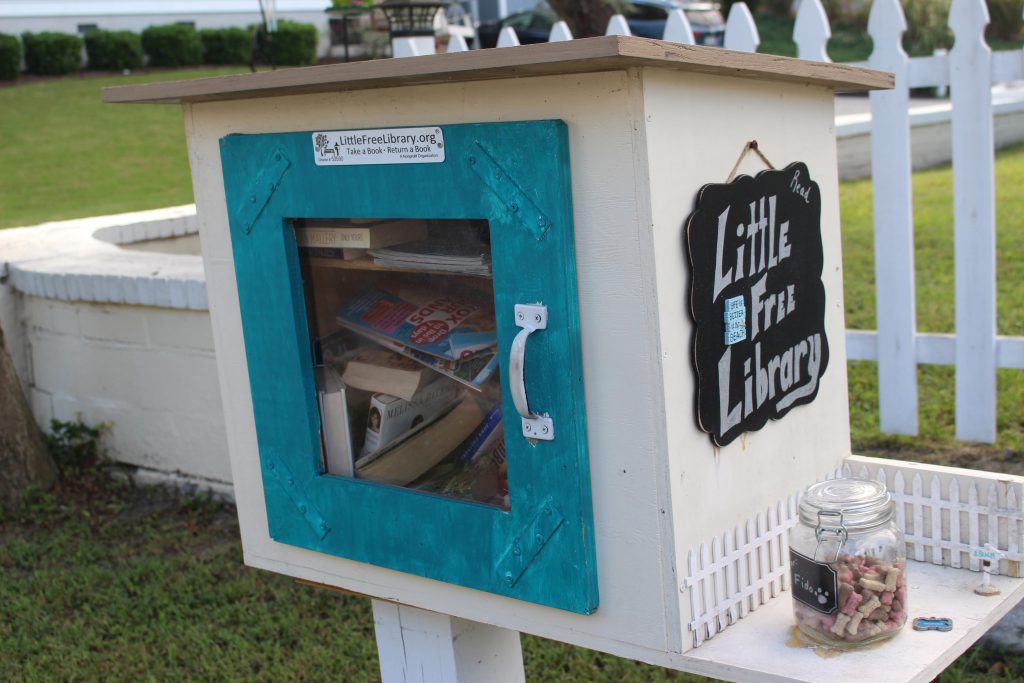Barbie has worn almost every costume imaginable, with a variety shown here.
Lora Young|Marlin Chronicle
The Barry Art Museum, affiliated with Old Dominion University (ODU), has rotating exhibits year round. “Out of the Box: A Barbie Doll Retrospective” is an exhibit that debuted on March 7. The exhibit focuses on Barbie’s history as a design icon and allows people to investigate the processes behind Barbie and her wardrobe. Being a fashion figure while inspiring young girls and breaking social cues, Barbie has been a major part of popular culture for decades.
The museum collaborated with the ODU theatre department and local artists to bring Barbie’s style to life, paying homage to the interiors of her dream houses and other iconic accessories. The museum also partnered with Bradley Justice Yarbrough, an expert on Barbie dolls.
As you enter Gallery two, the first half of the exhibit is focused on reviewing the history of fashion dolls, as well as their influence on the Barbie concept. There are a variety of different historical dolls from the 19th and 20th centuries showcasing evolving fashion.
There were many fashion dolls featured before Barbie. Madame Alexander, recognized as a doll trailblazer, is a featured designer. She founded The Madame Alexander Doll Company and introduced many standard ideas for doll manufacturers, including using plastic as a primary construction material.
She debuted a full-figured fashion doll years before the Barbie doll was introduced. The dolls featured in this section are all dainty and old-fashioned looking. There were porcelain dolls as well as bisque and wooden dolls. The extensive wardrobe and accessories of dolls was popular in 19th century France.

Barbies from the 2020s on display at Barry. This is one of many decades showcased, spanning Barbie’s 70-year timeline.
Lora Young|Marlin Chronicle
Other doll makers, Adelaide Huret and her sister Leopaldine, are featured for their extreme attention to detail when making high-quality dolls and accessories. They produced seasonal wardrobes ensuring that customers would continue buying from them year around. This business helped the Huret sisters become successful entrepreneurs.
Splitting the two sections apart in the middle is a house-shaped arch, which features paper dolls all over the antique doll side.
The paper dolls were produced between 1900 and 1960. A placard on the wall said that the wallpaper was designed by an ODU alumnus, Mason Hurd, who based the paper dolls off of the personal collection of Margaret Cheney. On the Barbie side of the wall, there is a designer spotlight for Jack Ryan.
According to the spotlight, Ryan joined Mattel after originally working on missile designs for the aerospace company Raytheon. With his engineering knowledge, Ryan was able to create the different movements Barbies can make such as the twist and turn of the waist and the knee joints that click.
As you move to the right, there is a showcase of different Barbies that students on the ODU campus picked out to display. The unique Barbies featured range from Jell-O Barbie to Mickey Mouse Barbie.
As you continue walking, you notice an army of Ken dolls featuring some that people didn’t know existed; Earring Magic Ken and Dreamboat Ken are two examples. The left side of the wall displays almost a century of Barbies, showing each decade’s most popular Barbies.
A key aspect of the exhibit pays homage to some of the most influential parts of Barbie in our culture; for example, the designer spotlight for Kitty Black Perkins. This spotlights the first Black Barbie doll, which was made in 1980.
“They were usually introduced as Barbies’ friends or background characters, but there was never a stand alone individual Black Barbie,” Cheyenne, an ODU student working the exhibit, said.
She thought that this Barbie was inspiring, seeing how the doll shows the power of imagination, while symbolizing the importance of diverse representation in mainstream culture. Now Mattel, the company that owns Barbie, has produced dozens of Black Barbie dolls.
This exhibit is not aimed at a specific age group, but rather at the whole family. It offers an opportunity to celebrate your childhood while appreciating the artists behind the work.
“I love seeing little girls come in and it makes them feel in awe,” Cheyenne said.
CNBC reported that due to the Barbie movie, Mattel has seen a significant surge in Barbies sales totaling a 16% increase. A lot more people may be interested in going to see this pop-up exhibit after seeing the movie. One Barbie from the movie featured on the decades wall is the Barbie Inline Skating Doll.

Mattel, Barbie|Courtesy
Caston Christman, a freshman at Virginia Wesleyan University, took Dr. Sally Shedd’s Wesleyan seminar Barbie class offered this past semester and attended the exhibit.
“It was really fun making the connections on what I had learned in class to the real items on display,” Christman said.
The exhibit is open until July 31. The address is 1075 W 43rd St, Norfolk VA. It is free admission to enter. If you are interested in seeing the pop-up, but can’t make it by the museum, check out their website for a virtual tour.
By Lora Young
llyoung@vwu.edu


